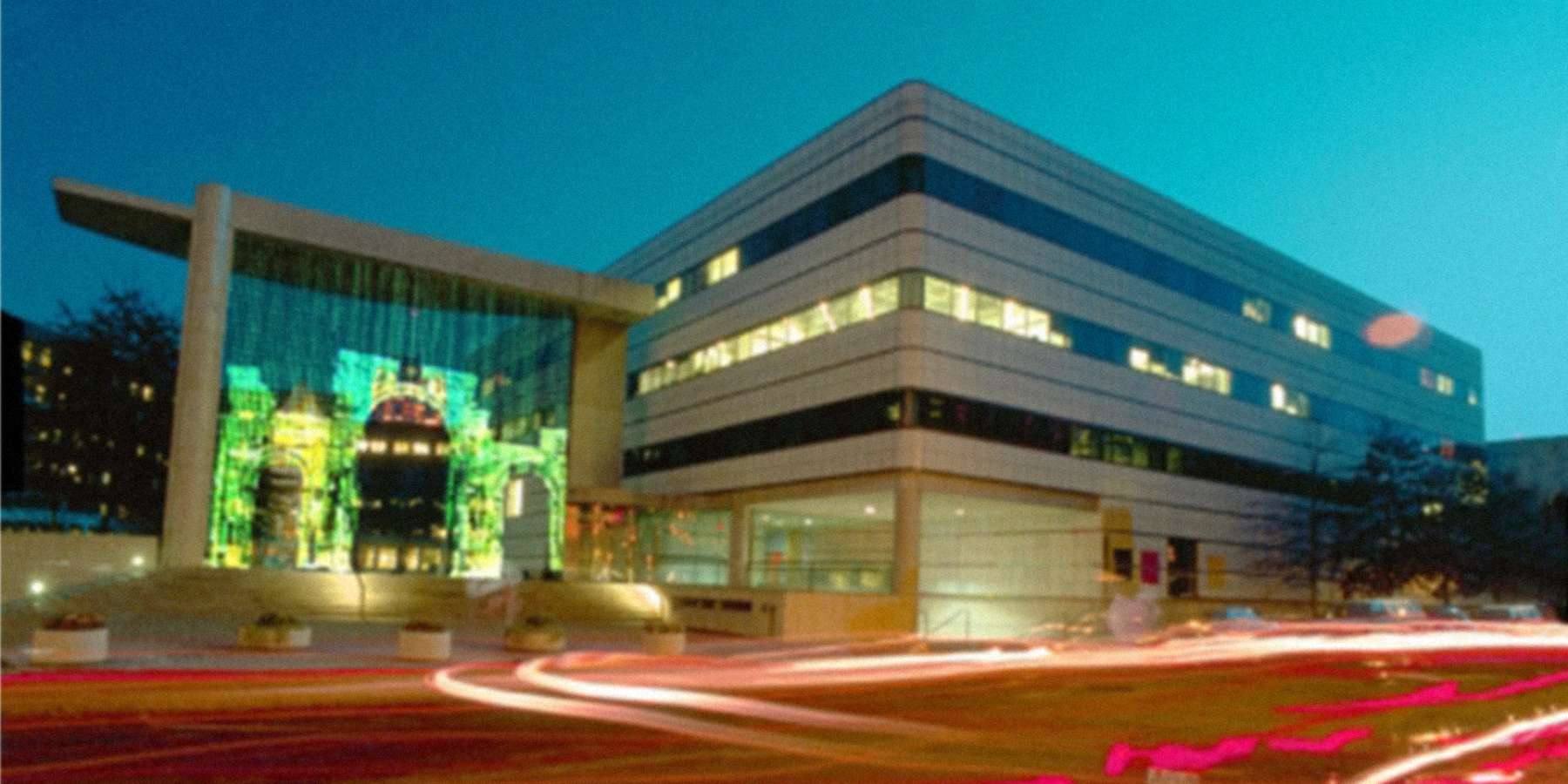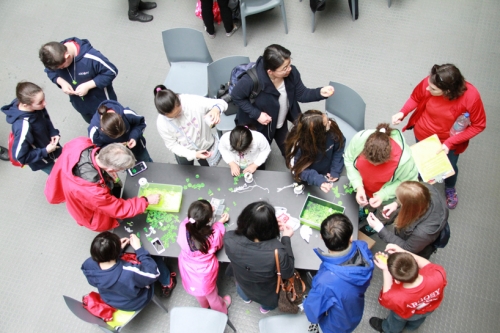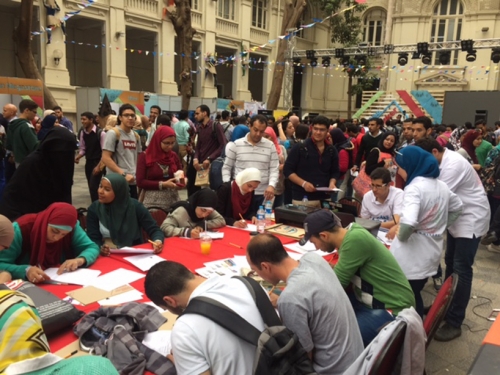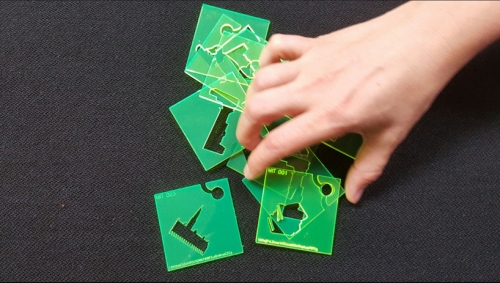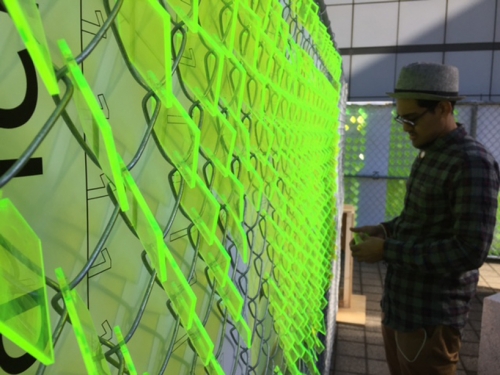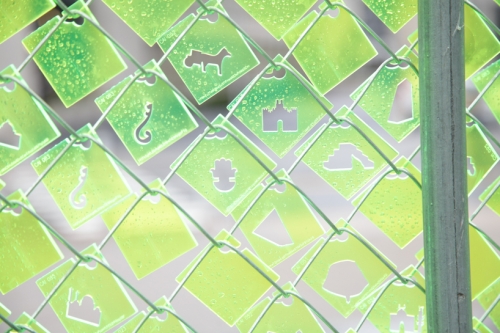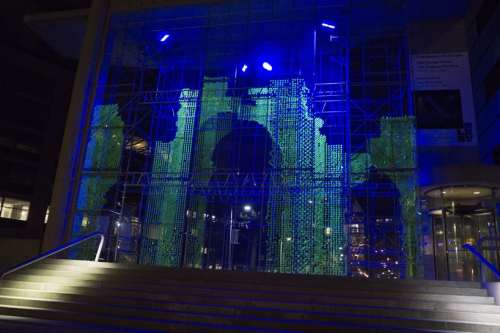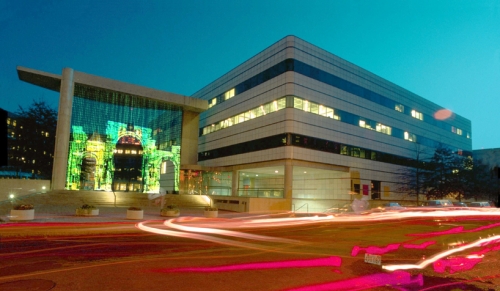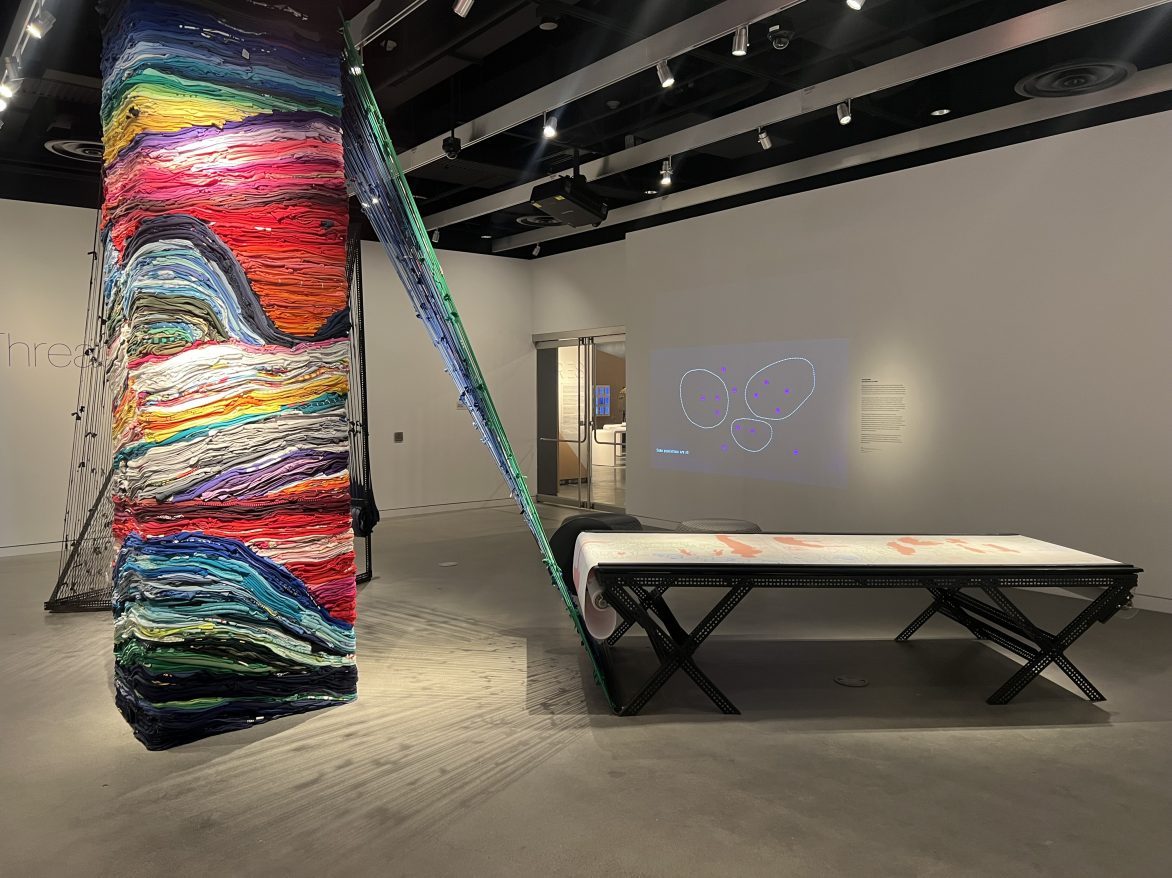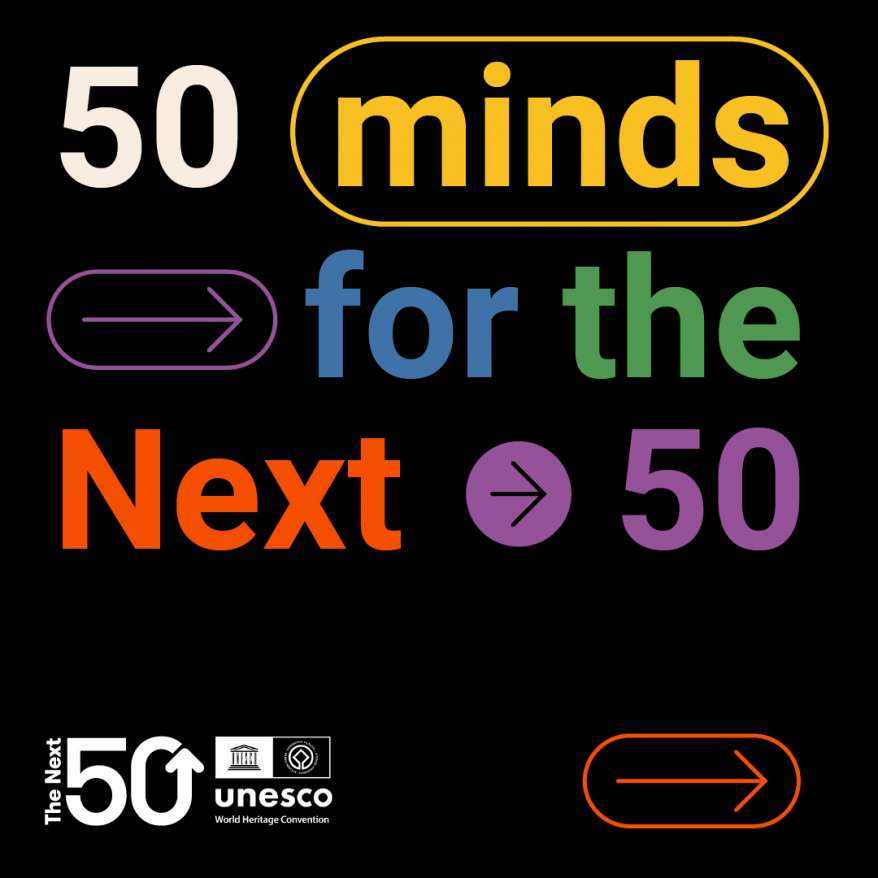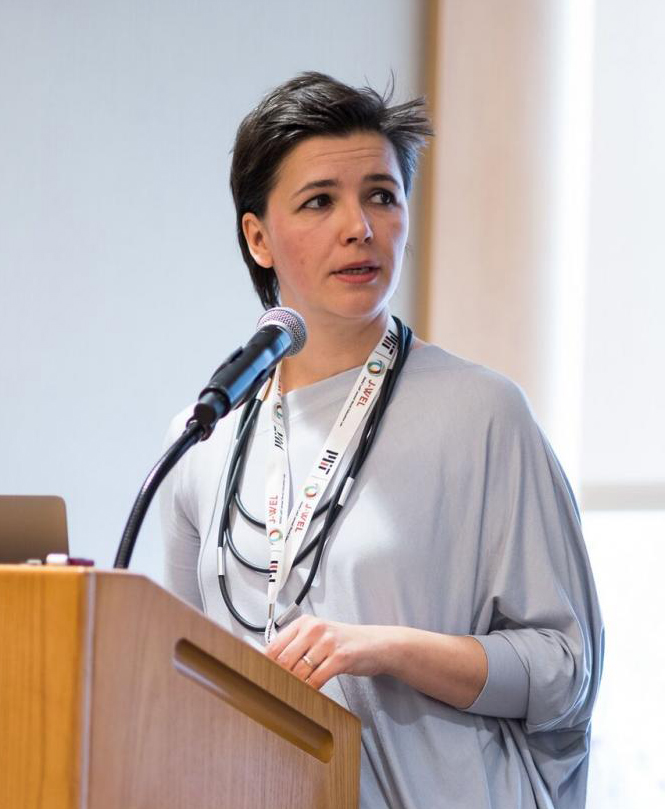memory / matrix / exhibition
Guided tours with the project’s lead artist, MIT Assistant Professor Azra Aksamija
Location: MIT Wiesner Building E15 (List Visual Arts Center / Media Lab), 20 Ames Street, Cambridge, MA 0139
Daylight experience: 5pm – 5:30pm – May 4 + 5
Evening illumination: 8pm – 8:30pm – May 4 + 5; and 9pm – 9:30pm – May 7 (MIT Moving Day)
The Memory Matrix is a monument in the making that explores the possibilities for future heritage creation, employing new fabrication techniques and transcultural workshops. The Matrix is made of border fences carrying over 20,000 small fluorescent Plexiglas elements or “pixels.” These elements are laser cut with holes outlining vanished and threatened heritage from different parts of the world. The larger matrix of pixels reveals an image of the recently destroyed Arch of Triumph from the ancient Semitic city of Palmyra, which is now only visible through movement of light and wind. Palmyra is one of the most important cultural centers of the ancient world and was listed as UNESCO World Heritage Site. This great city developed at the crossroads of several civilizations in the Syrian desert and its monuments embodied some of the world’s finest transcultural heritage. Palmyra’s Arch of Triumph was built in the third century during the reign of Roman emperor Septimius Severus and was destroyed by ISIL in October 2015—only ruins survive.
The Memory Matrix aims to advance and promote peaceful co-existence by enhancing our understanding of the world’s cultural heritage through contemporary art and educational workshops—in particular, through collaborations between students, artists, scientists, and innovators across contested cultural territories. The collaborative making process that involves students across the campus directly references MIT founder William Barton Roger’s vision in promoting hands-on collaboration. The Memory Matrix participates in the continuous evolution of the campus architecture at the Wiesner Building E15, built by the Pritzker Prize winning architect I.M. Pei in 1985. The piece is inspired by the ethos of MIT scientists and researchers, not to mention the tireless peace advocacy of MIT’s 13th President Jeremy Wiesner, after whom the building E15 is named.
The project involves the MIT community at the personal, the architectural, and the digital scales, according to the following physical and conceptual features:
Ghosts of global heritage
The cut-outs hosted by each pixel represent the physical absence of various monuments and artifacts that were recently destroyed and looted in Syria and Iraq, to religious architecture targeted during the WWII, Egyptian pyramids whose stones are now sold to tourists; and examples of intangible heritage, such as traditions and knowledge of indigenous communities disappearing with the forests of the Amazon.
Animated image
Arranged into three-dimensionally distributed panels, the individual pixels form a larger image: the Arch of Triumph at Palmyra. This image is anamorphic and is animated through the movement of wind and light, as well as the movement of the viewer. The fragmented image of the arch can only be fully comprehended from one point of view: standing at the corner of Building 66, looking toward Building E23.
Monument in the making
The scaffolding used to carry the installation is both structural and symbolic, indicating the continuous process of constructing, destructing, and repairing as a form of writing and rewriting history. Cultural heritage is a record of our history and of our (co-)existence.
Digital effect with physical materials
The fluorescent green acrylic used for the pixels is meant to create a digital effect through a physical material, referring to the fact that most of the vanished and threatened heritage now only exists in a digital form.
Border becomes a gate
The chain link fence references the fences used at borders to prevent refugees from entering different countries. The layering and spatial arrangement of the fences transforms the border fence into a gate.
Cryptographic heritage
The individual pixels are connected to unique entries in the globally distributed Bitcoin blockchain serving as cryptographically encoded, virtually indestructible evidence of a community’s history and heritage. As a research project, the Memory Matrix explores ways in which communities threatened by war can document their material and immaterial heritage as indestructible evidence.
Transcultural exchanges
Beyond its monumental form and archival function, there is also a strong educational and transcultural solidarity component to the project. The data and design of each pixel is produced by the participants in the Memory Matrix workshops, held at this year at MIT and the Cairo Maker Faire; and upcoming workshops in Detroit, New York, Jerusalem, Amman, Manila, Sarajevo, and Berlin.
Following the spring 2016 exhibition at MIT, the project is meant to travel to different locations, where it will be exhibited at different artistic and cultural venues in conjunction with workshops that engage local audiences in various sites.
This solidarity-building and educational enterprise was conceived by ACT Assistant Professor Azra Aksamija and is produced with the help of MIT students and a diverse range of partners within the MIT community and participants from the Maker Faire in Cairo and Syrian refugee camps in Jordan. This collaborative making process is a seed for a longer-term mission of the project – to benefit the education of Syrian refugees. The Memory Matrix takes the 100th anniversary of the MIT campus as an opportunity to highlight this pressing ethical imperative and make it relevant in the world.
Participate and create new pixels
Take part in a living monument.
Follow the link above, fill out a short form online about your piece of destroyed or threatened heritage and send in your drawing.

